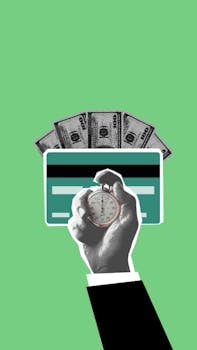
Saving money is essential if you want to achieve financial independence, go on that dream vacation, buy a new car, or even retire early. However, many people find it challenging to save their money. Furthermore, creating a budget can seem intimidating and overwhelming. But don’t worry, with the right approach, creating a budget can be easy and beneficial. In this article, we discuss why creating a budget is important and how you can do it effectively.Why is a Budget Important?Creating a budget is essential if you want to save money. A budget helps you see where your money is coming from and where it is going. It also helps you track your expenses and see where you can cut down on unnecessary expenses. A budget is an effective tool that can help you achieve your financial goals, whether it is saving for a new house, going on a vacation, or reducing your debt.How to Create a Budget?Creating a budget might seem overwhelming, but the process is relatively straightforward. Here’s how you can create your budget:1. Track your expensesThe first step in creating a budget is to track your expenses. Keep a record of every penny you spend for a month or two. Categorize every expense, such as rent or mortgage, groceries, transportation, entertainment, and so on.2. Determine your income

The second step in creating a budget is to determine how much money you make each month. This includes your net income (the amount you get after taxes and other deductions).3. Analyze your expensesThe third step in creating a budget is to analyze your expenses. Identify which expenses are necessary and which ones can be reduced or eliminated. This may involve creating a priority list, such as paying your rent first, followed by your utilities and so on. It may also involve cutting down on unnecessary expenses like eating out, entertainment, and shopping.4. Set financial goalsThe fourth step in creating a budget is to set financial goals. Determine what you want to achieve financially in the next month, year, five years, or ten years. You can set short-term goals, such as paying off your credit card debt, and long-term goals like saving for your retirement.5. Create a budget planThe fifth and final step in creating a budget is to create a budget plan. Use the information you have gathered to create a spending plan that outlines how much you will spend on various expenses. Make sure to allocate enough money for your necessary expenses and your financial goals. If there is any money left over, consider putting it towards savings.Tips for Budgeting Success

Creating a budget is an ongoing process that requires discipline, consistency, and flexibility. Here are some tips that can help you succeed in your budgeting efforts:1. Regularly review and adjust your budget as necessary2. Use a budgeting app or software to help you keep track of your expenses3. Consider automating some of your expenses, such as automatic bill payments4. Don’t forget to allocate money for unexpected expenses, such as car repairs or medical bills5. Be realistic with your budget and give yourself some wiggle roomConclusionCreating a budget is an essential step towards financial stability and independence. It helps you identify your spending patterns, prioritize your expenses, and achieve your financial goals. Creating and sticking to a budget may seem overwhelming at first, but with consistent efforts, it can become a habit that leads to financial success. Remember to be disciplined, flexible, and realistic, and you’ll be able to see the benefits of budgeting in no time!
 see all posts!
see all posts!











































